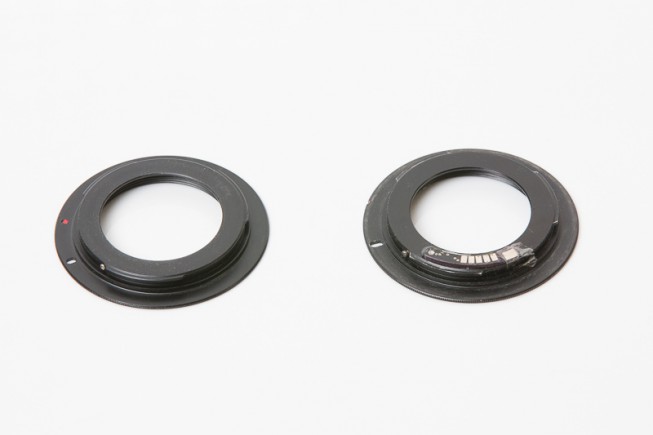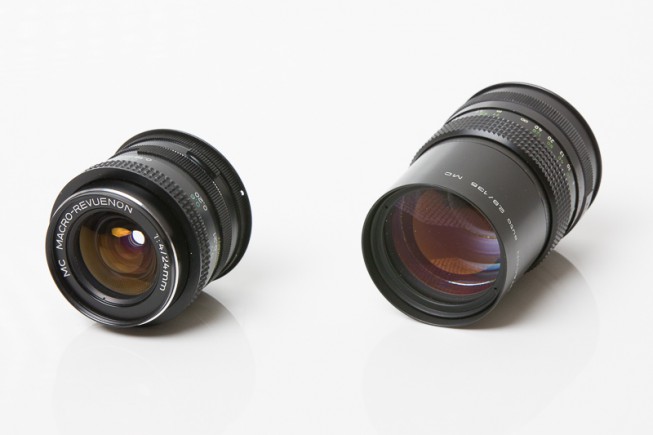A Great Path to a Cheaper Lens

The article is over 5 years old. The information in it may be outdated.
![]()
We are working on its update. In the meantime, you can read some more recent articles.
Every owner of an interchangeable-lens camera has been there: so many great lenses, so little money to spend on them! But thankfully there’s a way to pick up some very decent lenses at great prices.
The classic way to save here is to buy used lenses. But today’s article is about more than just second-hand products. It’s about third-hand! And fourth-hand, and often even lenses that haven’t been manufactured for years. Today we’ll be talking about 20th-century lenses. While they’re not technologically up to par with today’s models, many of them are still very good kit. Because these lenses cost a fraction of the price of modern lenses, they are definitely worth your consideration.

The Main Downside
When you’re talking mid-20th century lenses, you’re mainly talking about the M42 screw thread mount. It didn’t even considered the use of autofocus, so the photographer was required to use the focus ring. The M42 mount was a respected standard at the time, but it is not used in today’s cameras anymore. So with former cameras the M42 lenses could be mounted easily – just screw them on and you are ready to shoot. But the price would be losing all the advantages of the digital age.
What about modern cameras?
Here the situation is more complicated. Every manufacturer has a different bayonet for their DSLRs, and the key factor is a number called “flange distance”—the distance from the sensor to the bayonet. For an M42, it’s 45.46 mm. In today’s EF’s and EF-S’s, Canon uses a distance of 44 mm, so all you need in order to use these lenses is an adapter that’s 1.46 mm thick. (Naturally here too you lose the auto-focus.)
Nikon uses a flange distance of 46.50 mm, which means that to use an M42, you’d have to move the lens inside of the camera body. Unfortunately that’s impossible, so adapters are useless for Nikons, what with the sensor “film” being at a larger, not smaller, distance than intended. The result is that you can’t focus to infinity. But if you only want to use the lens for portraits, then that’s a bearable loss.

So if you are thinking about M42 lenses, you should first check the flange distance (Wikipedia) and if appropriate look for adapters for your make and model e.g. on eBay).
There’s one more important thing to know>: there are also lenses that you can mount with no visible problems, but whose rear glass then rests so deep within the camera body that it can bump into the mirror during your shots! While collisions like this aren’t an immediate reason to send your camera off for repairs—a mirror can take at least a little punishment—there’s no way you can take pictures like that. So before using an old lens, or ideally before buying it, look on the Internet to see if anyone is successfully using your combination of body and lens.


Which Adapters Can I Use?
There are two basic types of adapters: “dumb” adapters, which are simple metal plates, and “smart” adapters with simple electronics. A dumb adapter lets you mount the lens, but your camera will have no idea that the lens is there. A smart adapter joins the contacts in the bayonet and convinces the camera body that a lens of some sort is attached to it. This usually makes the camera think it has a 50 mm, F1.4 lens on it. The advantage of the smart adapters is that they make the camera turn on its internal mechanisms and, when you’re focusing manually, they make it show a red dot on the display the moment you’re in focus (at least on Canons). With a dumb adapter, you have to live without this assistance.

Benefits for Photography—And Video Too
Of course the main reason for using old lenses on new bodies is the lenses’ price. You can find quite a few lenses in the 50-100 dollar range, making them a good buy even after adding in a few dozen dollars for an adapter.
But you can get a really fantastic benefit if you work an M42 lens onto a body that has a much smaller sensor, and therefore a much smaller flange distance. In that situation, you have a lot of room between the body and the lens, and so instead of a normal adapter, you can buy a tilt-shift mechanism, giving you a tilt-shift lens.
There’s also a bonus here for you if you do video. Many old lenses have what’s called a stepless aperture—an aperture that does not jump among pre-set levels, but can be opened and closed smoothly instead. You can use these smooth effects in video, which is something you can’t do with a normal modern lens.
One last positive we should mention is sturdiness. In most cases, M42 lenses are made of metal, and since an old lens has survived dozens of years, it’s a sign that it was built to survive. The absence of a focusing motor, a stabilizer, and electronics also means that there are few parts that can break down.
The Disadvantages… And the Red Flags
Of course we have to tell you the downsides too. First of all, as mentioned: no auto-focusing. Also, outside of a day or two after your purchase, probably no refunds and no returns. Check for defects ASAP!
The most common defect is the shutter getting caught and closing with a jerking motion, or not at all. You should also check the inside of the lens for dust or mold. Both of these will degrade pictures taken with that lens, although this effect may be mild. They usually cause reduced contrast and a slightly foggy picture. (Sometimes this can even be an advantage.)
My Own Experience
I own two 20th-century lenses. The first is a Pentacon 135 mm F2.8, usable for portaits
and other pictures with a blurred background. Any alternative at all to this lens would be the expensive route, considering that it cost less than $80.
I bought the second such lens just recently; it’s a Macro-Revuenon 24 mm F4, and it serves as my backup lens at weddings. It’s small and easily portable, and my expectation is that I’ll be using it if my main wide-angle lens (a Canon 16–35 mm F2,8 II) ever suffers a problem. It also lets me take closeups, so it’s useful for pictures of rings, etc.

While it’s rare that I use these two lenses, they work superbly, and they definitely have impressive performance for the price.
If you haven’t thought about this approach before, it may be time to start. Secondhand shops and internet auctions are full of lenses like these.

Richard A. Novak
While I agree with the intent of this article, there are a few errors and omissions. 1 – M42 mount used for example in old Pentax lenses is a screw thread mount, not bayonet (the later Pentax K mount is a bayonet). 2 – Pentax does not use M42 screw mount today, the new Pentax DSLRs use a modern version of the K-mount. However, all Pentax DSLR’s can work with old M42 screw mount lenses (with a thin adapter ring) and will work with all older K-mount lenses. 3 – With certain camera brands, you don’t have to “live without” focus confirmation if you use “dumb” adapters – many cameras (Pentax included) can provide metering and focus confirmation without “smart” adapters. Pentax for example can provide both focus confirmation icon in the viewfinder or “focus peaking” highlighting when using the live view screen. I’m sure there are other manufacturers who also offer this capability. 4 – An omission – the newer mirrorless interchangeable lens cameras like the Sony NEX or the Pentax K-01 are well suited to use older manual focus lenses like M42 or other mounts, avoiding the issue of mirror interference and having a very short sensor to mount distance enabling them to use almost any old lens (even those designed for rangefinder cameras like the Leica). I’ve been successfully using many old Pentax and Minolta lenses on my Sony NEX-5N mirrorless camera and now on the Pentax K-50 DSLR (in addition to my old Pentax Spotmatic 35mm SLR).
Vit Kovalcik
That’s an informative follow up, thank you! Now I see there is a problem with our internal processes as I am sure that I have fixed at least error 1 and 2 in the Czech version of this article. However it was the previous version of the article that was translated. I’ll see what I can do about these bugs here.
As for the number 3 and 4 you are of course right, especially number 4 is very valid and you give a good point about this new (relatively) phenomenon. For the Four Thirds system it is common to use the old lenses. I am not sure why I didn’t even mentioned that, but I am glad you did.
So, sorry for the mistakes and hopefully, the next articles will be better in this regard :)
Richard A. Novak
Thank you for writing the article. It was through photographer/authors like you and inspiring articles like this that I’ve learned so much over the last year on this topic. I look forward to reading your future topics.
Val
Hey all, great article, congrats! I’d like to add a couple of notes for all the Nikon users on a budget out there. I myself own a good couple of old lens because Nikon uses the same F bayonet as on the original F (I own an F2, hence the lens collection). Of course there are downsides as well, but depending on the lens you can get pretty much everything. There are many great articles out there about it, do your research on lens and functions you loose / can keep before buying.
There’s only one thing you must watch out for which can seriously damage your camera’s electronics, is that you can’t use pre-AI lens. Again, just research that and you’ll have hundreds of articles discussing this. There are ways to protect your circuits though, with DIY, look into it, it’ll worth it. There are some truly amazing lens out there that you can get for less than $50 if you’re lucky. But hurry, because they are becoming cult and cool as we speak. Every time I show up with my F2 or my Yashica mid-format dual lens camera at a wedding people immediately forget about the newest and most expensive models and come to me to chat.Especially the photographer… :)
There are great advantages with these lens, some of them were mentioned in the above article (again, great job). But for the price they are just unbeatable. Compare them with lens for the same price range and you’ll see. :) I use these with my D700 and get amazing results.
And yes, they are without competition when it comes to shooting films with your DSLR or RED (they used F bayonet too).
Keep on shooting (pictures/film ;))!
Vit Kovalcik
Wow, that’s some interesting information, thanks for sharing! As a Canon user I don’t know much about the underlying problems and advantages of Nikon lenses, so is’ great that you could have added it.
You are right about the older cameras that steals the show on weddings or other places :) As a wedding photographer I now recall that in the few cases when someone had such rare camera, I was definitely intrigued and I saw myself chatting with those guys very soon :))
Russell Cairns
I have a very old (40+ years) Vivitar Tele-Zoom 90-230mm 1:4.5 lens that I used to use with my old Canon 35mm camera. I now have a Canon EOS 70D camera and I wonder if someone can tell me if I should be able to find an adapter – if so, what should I look for?
Alan T
Thank you for writing this article. After reading it, I searched and bought a lens adapter by Metabones. Now I am using a Lumix GX7 fitted with a 30 year old Nikkor 35-70mm lens which is a manual lens. The Lumix GX7 is a perfect camera body to use this type of lens as it has focus peaking and in body IS. The quality of the photo taken using the Nikon lens is very close to a CAD$1,500 Lumix 35-100mm lens.